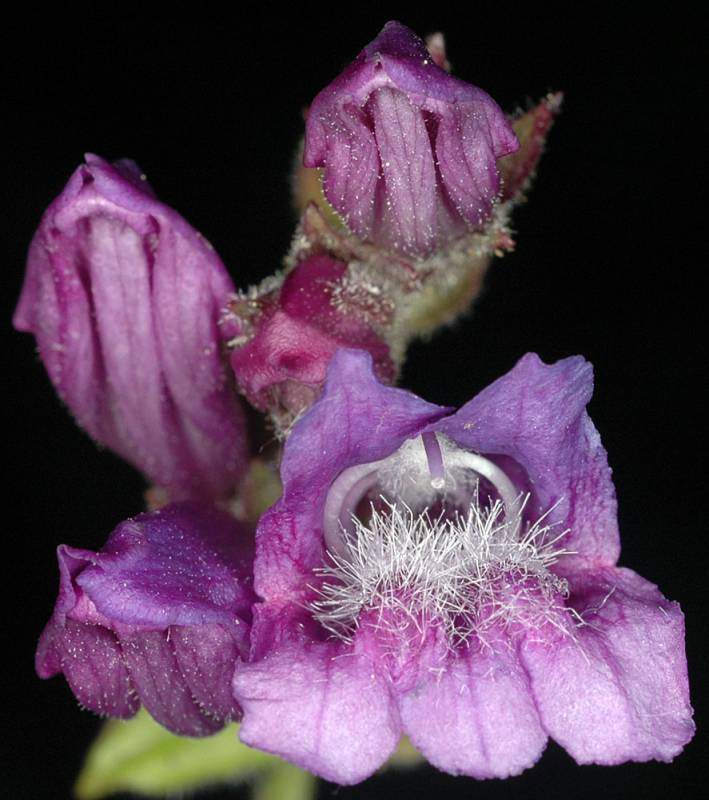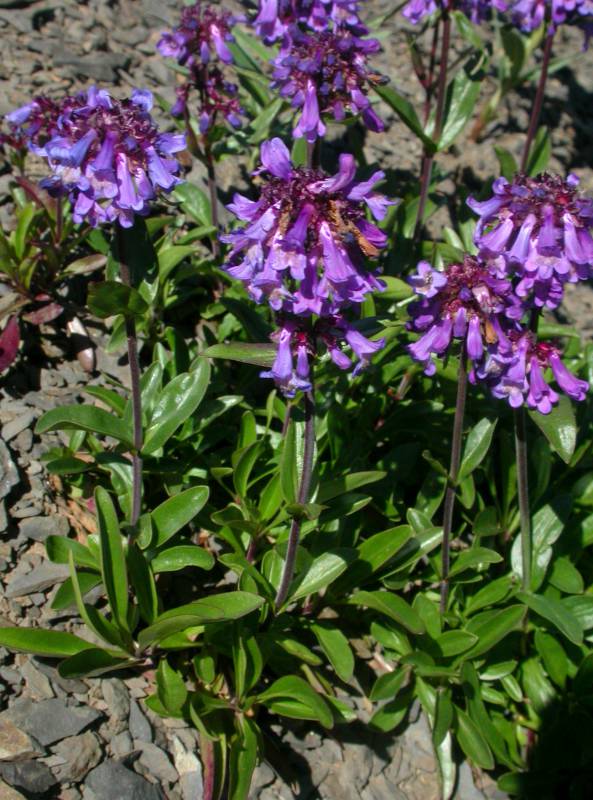Penstemon cardwellii
Penstemon procerus
Cardwell's beardtongue
small-flowered penstemon
Leaves opposite, glabrous, the largest on short, sterile shoots, serrulate or nearly entire, short-petiolate, the blades elliptic, 1.5-3.5 cm. long and 6-14 mm. wide;
leaves of the flowering shoots less crowded, smaller, sessile and entire.
Leaves opposite, entire, the basal ones petiolate, oblanceolate to elliptic, up to 10 cm. long and 1.5 cm. wide, often poorly developed;
cauline leaves few, mostly sessile, often much smaller that the basal leaves.
Inflorescence racemose, few-flowered and crowded, glandular, the simple pedicels opposite and axillary;
calyx 5-12 mm. long, the 5 segments thin and lanceolate;
corolla bright purple to deep blue-violet, 30-38 mm. long, about 1 cm. wide at the mouth, keeled on the back, glabrous outside and with long, white hairs near the base of the lower lip within;
anthers long-wooly, pollen sacs opposite;
staminode slender, shorter than the 4 fertile filaments, long-bearded toward the tip
Inflorescence of 1-several, very dense verticillasters, the flowers curved downward;
calyx 1.5-6 mm. long, the 5 segments truncate to acute, the margins scarious;
corolla deep blue-purple, 6-11 mm. long, the tube narrow, 2-3 mm. wide at the mouth, not strongly bilabiate, the raised part of the lower lip bearded;
staminode usually bearded, sometimes glabrous;
pollen sacs glabrous, sub-rotund, wholly dehiscent and opening wide enough to form a plane.
Capsule
Capsules 5-8 mm. long and seeds approximately 1 mm. in length.
Penstemon cardwellii
Penstemon procerus
- Local floras:
BC,
CA,
OR,
WA
- Local Web sites:
CalFlora,
CalPhotos,
Flora NW,
PNW Herbaria,
Turner Photog.
WildflowerSearch
iNaturalist (observations)
USDA Plants Database
- LBJ Wildflower Center
- SEINet
- Plants of the World Online
- Encyclopedia of Life
- Wikipedia
- Google Image Search

